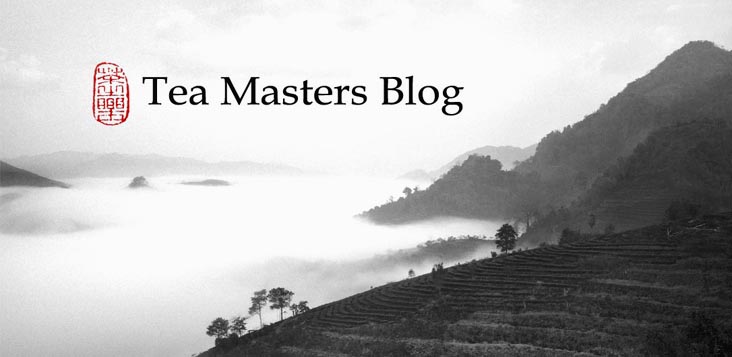 |
| Qingxiu temple in Jian township, near Hualien |
In the early 20th century, Japan promoted the 'Formosa Oolong tea' brand while it occupied the island (1895-1945). During my vacation on the East Coast of Taiwan, I visited this well preserved Japanese Shinto temple. It is a beautiful reminder of Japan's presence on the East Coast until 70+ years ago.
On the East coast, the Japanese developed the production of rice, sugar and wood logging. There was no significant tea production during the Japanese era on the East Coast, but this would change today, as you'll see at the end of this post.
The Japanese didn't just appreciate the fertile lands between Hualien and Taidong, they also loved the the beauty of the majestic Taroko gorges. See this picture:
The Taroko gorges are located at the end of the mountain road that leads from Lishan, Da Yu Ling to the East Coast of Taiwan. It is the end of the central cross-island mountain highway.
On the right hand, in the middle of the next picture (click to see the details), you'll see cars on that road. This will give you a scale to appreciate the size of these huge cliffs.
The Taroko gorges offer lots of trails and walking possibilities. The lush landscapes of tall mountains, frentic rivers and huge rocks are majestic.
You might even come across a group of monkeys jumping from branch to branch in the dense forest!
The last sight on the way out of the gorges is the Eternal Spring (Changchun) shrine built in 1958 to honor the 212 workers who died building the cross-island central highway.
It's not a small monument, but it is dwarfed by the size of the mountains. This could be a
classic Shan Shui painting.
After Taroko, let's have a look at the other beautiful East Coast landscape: the Pacific Ocean! There are stunning views along the coast:
 |
| View from Baqi |
The steepest cliffs plunging in the ocean are found along the dangerous road between Suao and Hualien:
 |
| Between Suao and Hualien |
The East Coast is where most earthquakes occur in Taiwan. That is where the Eurasian plate meets the Philippine plate. What I didn't know (before this trip and a visit to Taitung's
National Museum of Prehistory) is that the stretch of land on the east coast of Taiwan actually belongs to Philippine plate, while the west coast and the mountains in central Taiwan belong to the Eurasian plate.
 |
| Shihtiping |
This explains the very different landscapes between western and eastern Taiwan. Add the large presence of Aborigines on the East coast and you feel more a Pacific than a Chinese culture!
 |
| Ba Xian caves |
The sun is particular strong around noon in summer. Like prehistoric humans, we were glad to find shade in the Ba Xian caves, a prehistoric site.
The mountains are covered by a jungle that is difficult to penetrate.
 |
| North of Taitung |
The site of this home stay is wonderful:
The forest and the mountains on one side and the ocean on the other:
In another article I will show the morning Chaxi I made at this location! But now it's time to visit some tea fields. South of Ruisui township we can see the Tse Ke mountain, the origin of
this fine spring 2015 red and
this summer 2016 competition grade red.
 |
| TseKe mountain |
Ruisui is famous for being crossed by the Tropic of Cancer, just like JiaYi on the west coast. This means that it is at the same latitude as the Alishan!
 |
| Da Yeh Oolong plantation in Ruisui |
The summer season is a peak season for red tea harvests. We were lucky to arrive on time to see these harvesters at work.
You can see weed growing between the tea trees. The farmer produces organically, because his red tea will have a better honey fragrance if the leaves are bitten by the green jassids (jacobiasca formosana paoli).
The most suitable cultivar for this red tea process is the Da Yeh Oolong. The big breakthrough for this tea came 10 years ago, in 2006. The farmer won the 'best tea in the world' at an international competition (held in Taiwan). Many Oolong producers were stunned. How could a red tea beat them on their own turf?
This red tea is actually a clever innovation. It is built on the traditional principles of Oriental Beauty (organic farming, insect bite, high oxidation), but it is adapted to a cultivar and process that is better suited for the Pacific terroir of the Taiwan's East Coast.
I hope you've enjoyed my summer vacation pictures. Stay tuned for more in the coming week.







































































